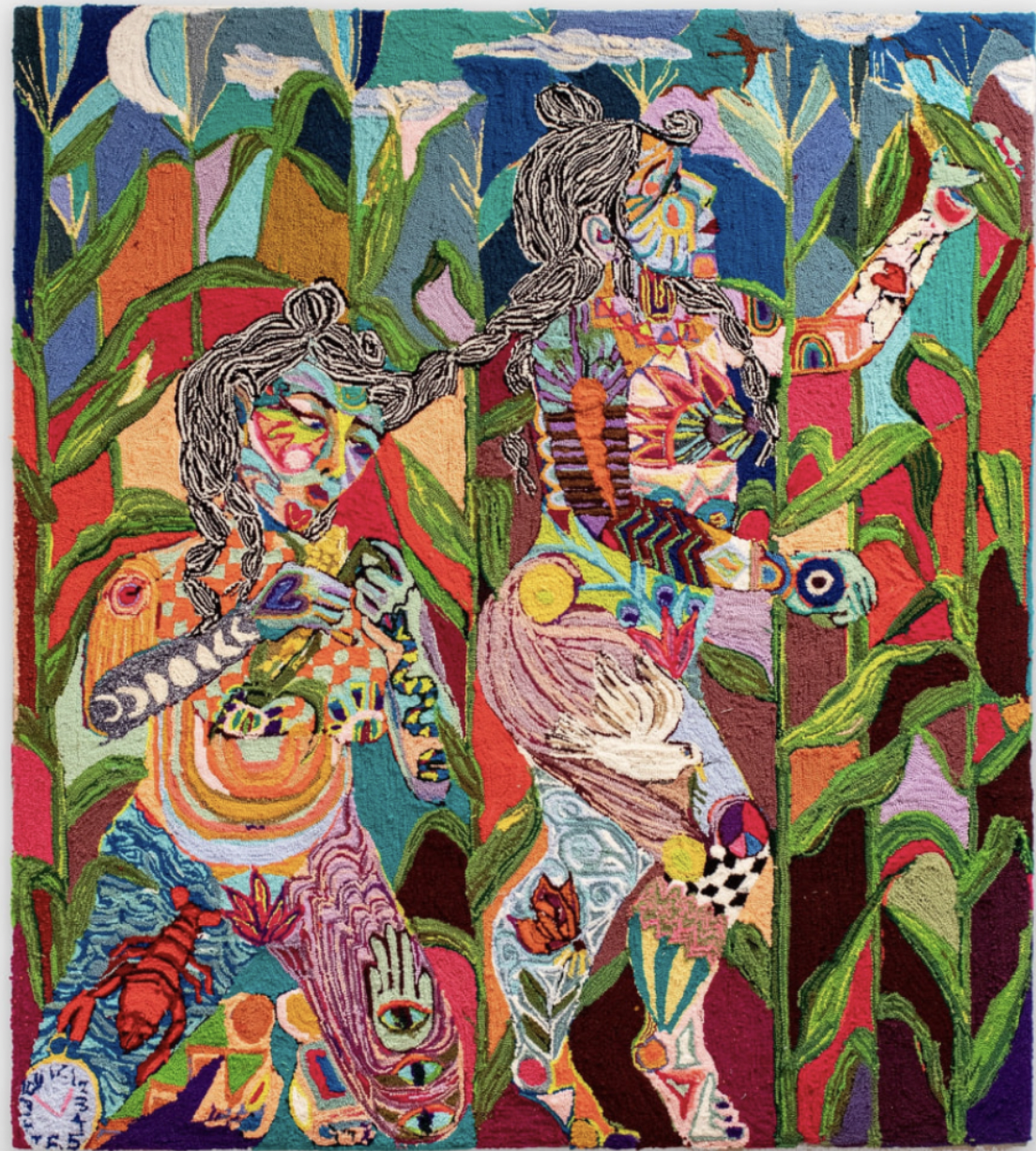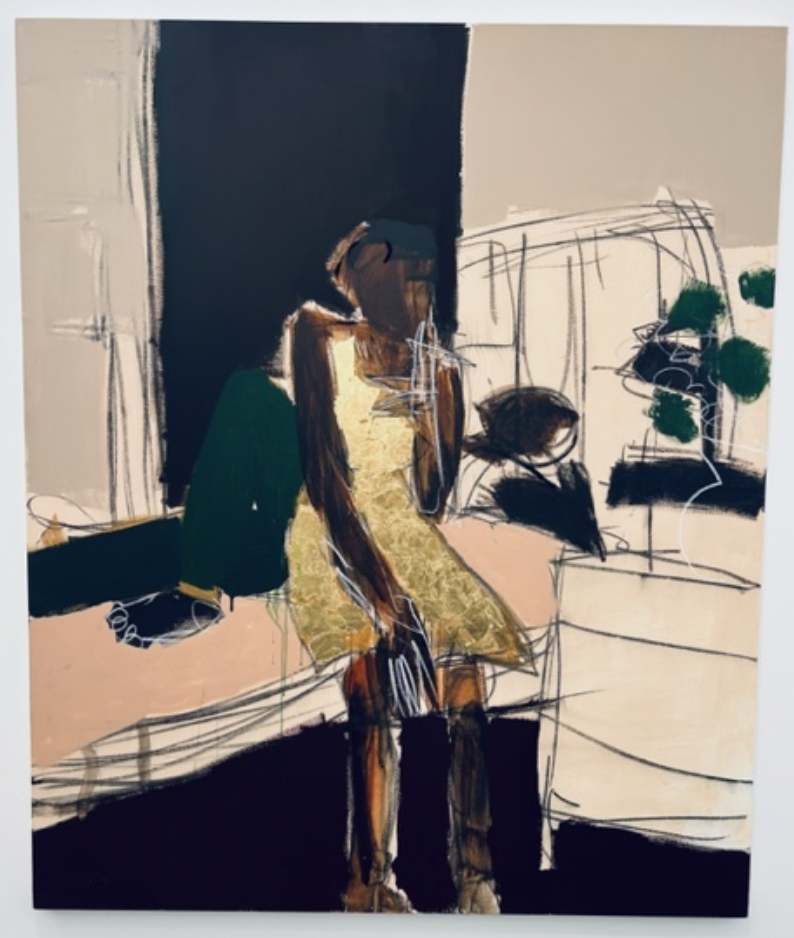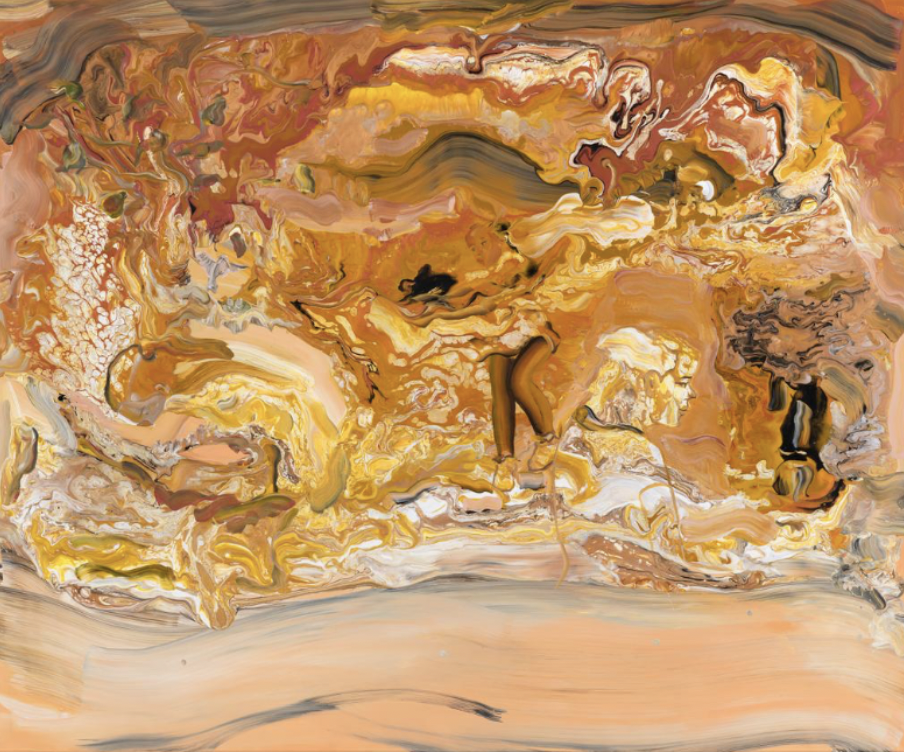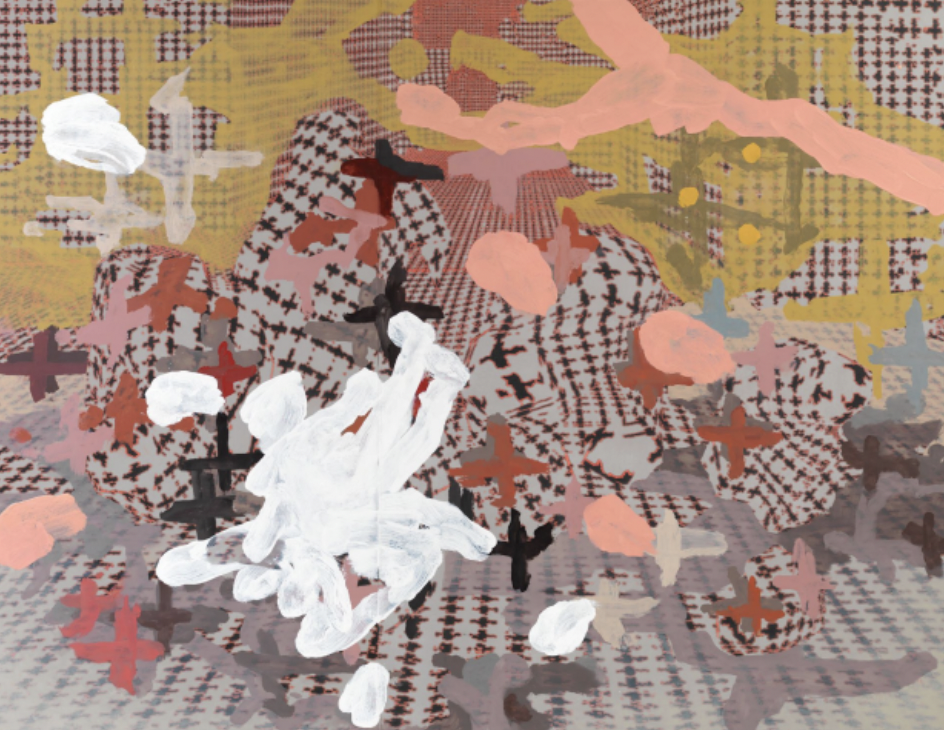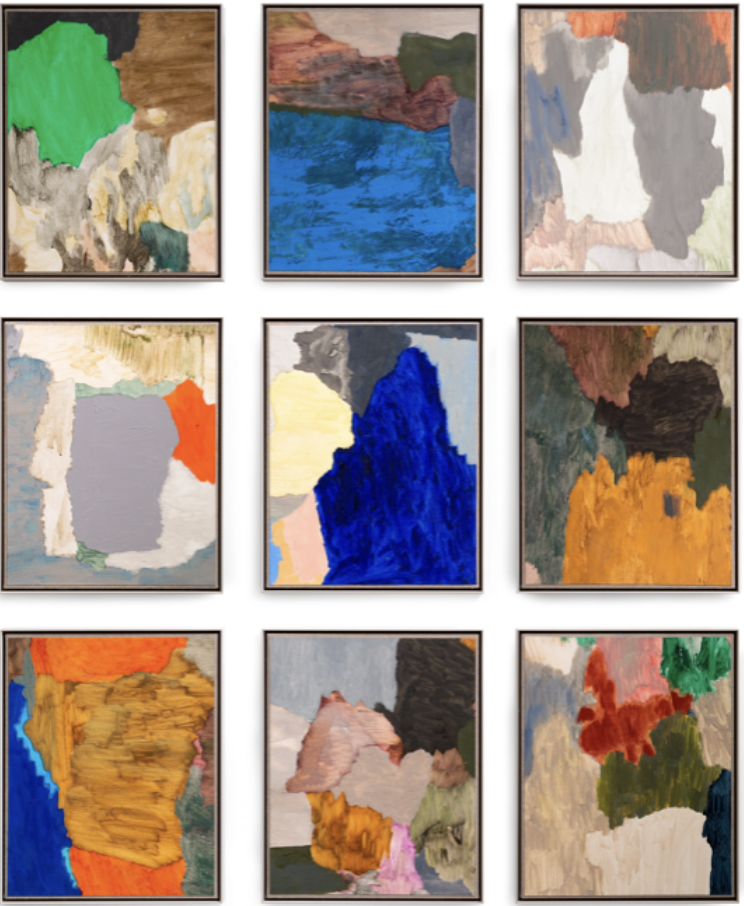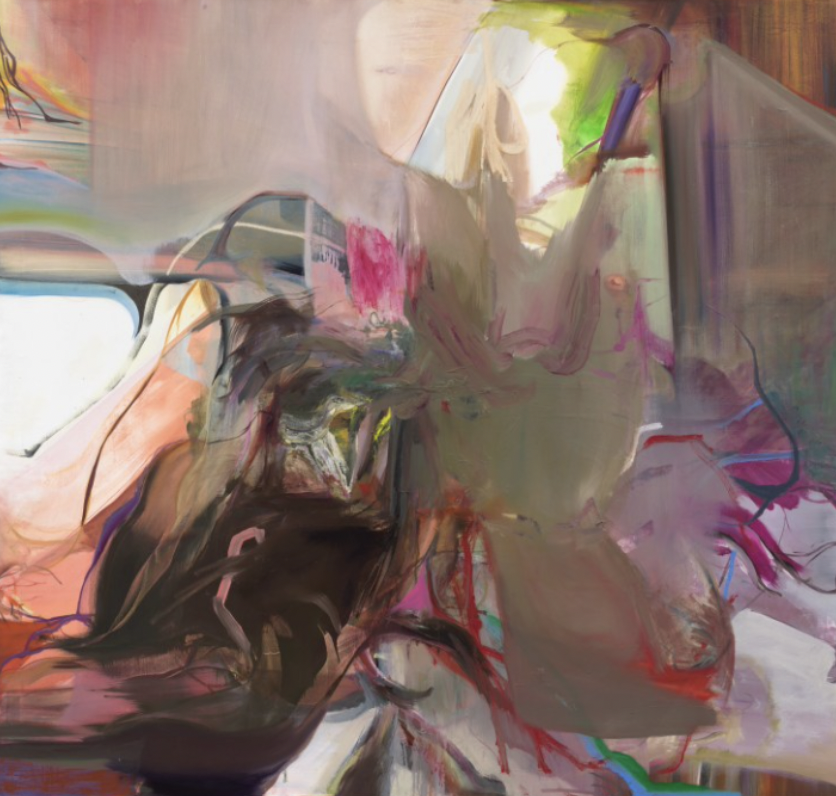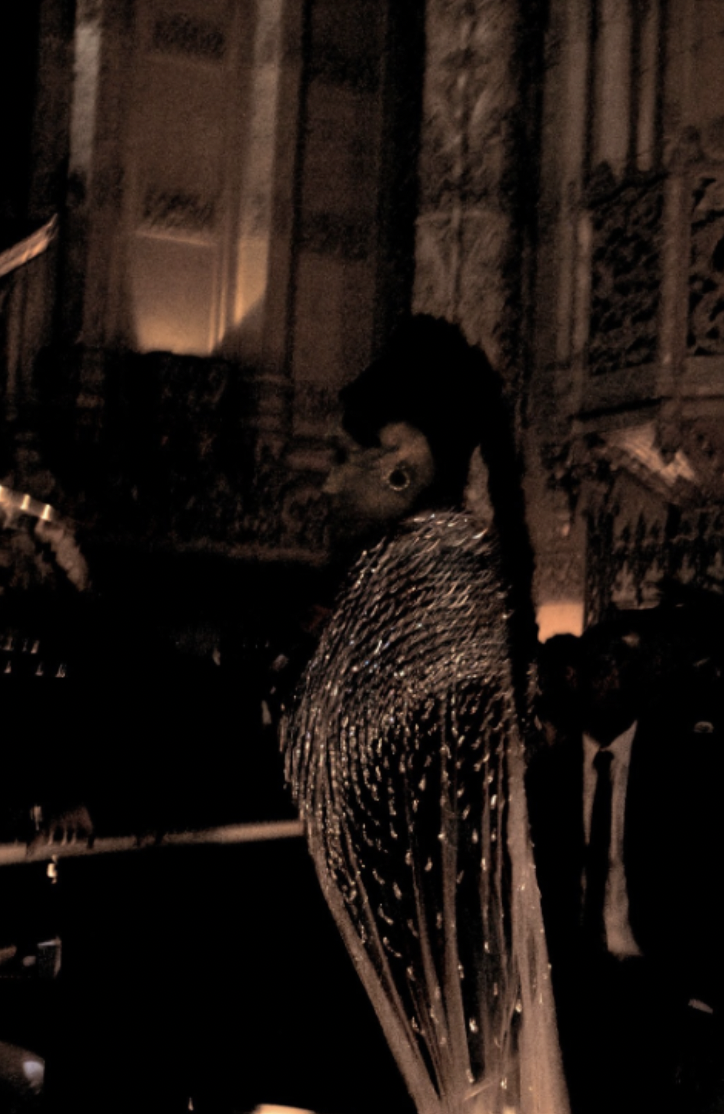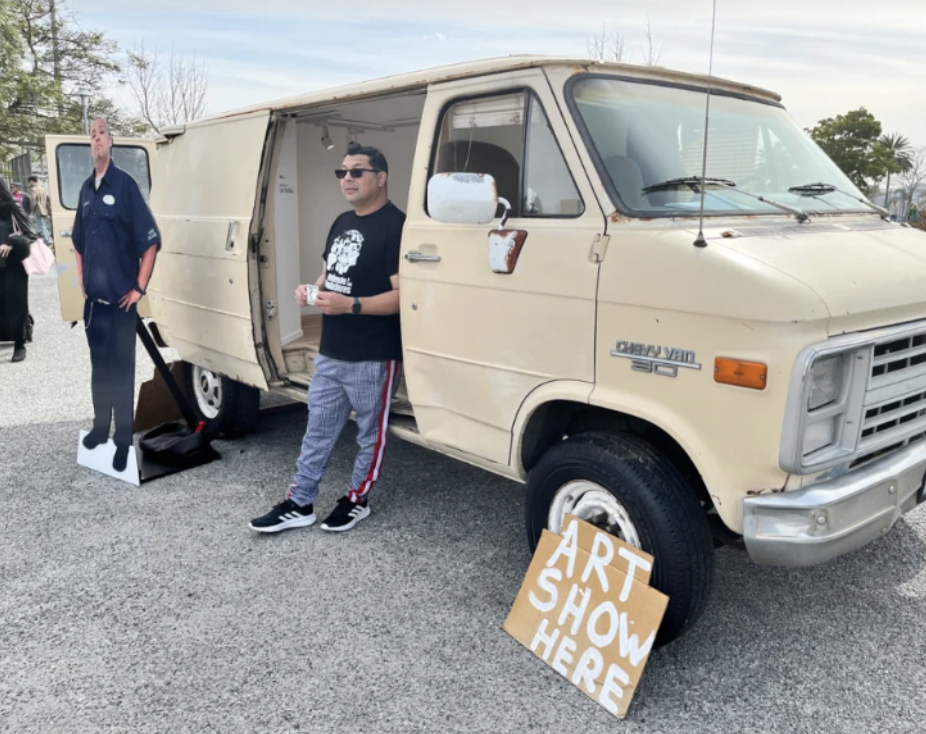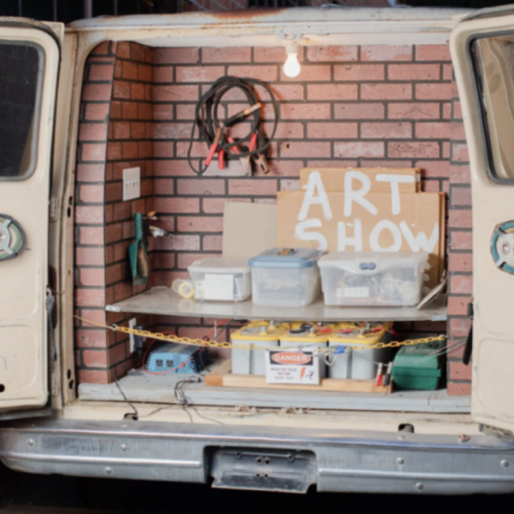ART FAIR WEEK IN LOS ANGELES
FEBRUARY 2023
During a sunny but chilly week, Felix and Frieze Los Angeles opened their 2023 editions. Frieze welcomed fairgoers at its third and newest location, the Santa Monica Airport, and Felix welcomed visitors in its usual location at the Hollywood Roosevelt Hotel. This year, Frieze was split between two sections: the larger of the two in a custom-built tent and the smaller in the airport’s Barker Hangar, with golf carts available to shuttle visitors between them. The preview days for both fairs were well-attended, albeit with slight glitches in terms of parking (Frieze) and long lines for the elevator (Felix). Both fair’s exhibitors reported robust sales, as per usual. Artwork that was not pre-sold in the weeks leading up to the fairs was purchased on-site but in a slower, more thoughtful manner, despite the frenzy of guests, collectors, curators, art advisors, and on-lookers perusing the aisles and hotel rooms. Both fairs boasted more exhibitors this year than in years past, with artwork that raised the caliber to an even higher standard.
Here are some highlights ...
LIV AANRUD
Liv Aanrud’s textile works explore the female figure in lush landscapes through the use of color, texture, and abstraction. Aanrud’s works defy categorization, and are constructed with fabric using a meticulous hand-tufted method. The rolled-up line of the yarn becomes a stitched, soft sculptural drawing that looks like a painting. The bright palette is also a central component of her visual language, creating a sense of vibrancy and visual play.
Liv Aanrud was born in 1979 and earned her BFA in painting from the University of Wisconsin, Eau Claire in 2001 and an MFA from Mason Gross School of the Arts at Rutgers University in 2011. In September 2023, Aanrud will have a solo exhibition in Lillehammer, Norway at Elephant Kunsthall. Liv Aanrud lives and works in Los Angeles.
DYANI WHITE HAWK
Dyani White Hawk (Sičangu Lakota) creates intricate, exactingly-executed paintings that often combine the Lakota art of quill work with strong lines that echo blanket and moccasin patterns. She uses abstraction to bring American Indian tradition into a dynamic contemporary context by using her breadth of life experiences: Native and non-Native, urban, academic, and cultural education systems. White Hawk is invested in reorienting the history of abstraction and reclaiming the narrative that it was a 20th-century invention by white European and American men when it is, in fact, a centuries-old visual language long used by numerous Indigenous cultures.
White Hawk earned her MFA from the University of Wisconsin-Madison and BFA from the Institute of American Indian Arts in Santa Fe, New Mexico. Her works are part of permanent collections, including the Akta Lakota Museum, South Dakota; Crystal Bridges Museum of American Art, Arkansas; Denver Art Museum, Colorado; Minneapolis Institute of Art, Minnesota; Museum of Contemporary Native Arts, Santa Fe, New Mexico; Museum of Modern Art, New York; Pennsylvania Academy of Fine Art Museum, Philadelphia; Smithsonian National Museum of the American Indian, Washington, D.C., and Walker Art Center, Minneapolis.
FERRARI SHEPPARD
Blurring the lines between abstraction and figuration, Ferrari Sheppard creates mid to large-scale paintings exploring the collective consciousness of humanity. The Los Angeles-based artist was born in Chicago and lived in various countries in Africa. His paintings are influenced by memories, dreams and lived experience, evoking a sense of nostalgia.
Sheppard’s approach includes working with acrylic, charcoal, and 24k gold on a large canvas, conveying movement and emotion through his confident brushstrokes and distinctive use of color. His abstract practice brings forth irregularities in each work giving the viewer a sense of activity and excitement, with evocative titles used to reflect deeper meanings and cultural references.
HEND SAMIR
Egyptian-artist Head Samir's latest body of work embraces a mid-size panoramic format that captures much of the energy of her monumental canvases. In these tall and wide paintings, figures peek out from branches, cabinets, fragments of architecture, and swaths of kaleidoscopic unformed environmental matter—the hallmark of her unique process. Samir begins each painting by letting the work's marbled ground speak to her, pushing paint like the wind rippling through a cloud, until faces, bodies, and familiar forms emerge.
Hend Samir was born in 1986 and is currently based in Amsterdam and Cairo. She recently completed a residency at the Rijksakademie Van Beeldende Kunsten, Amsterdam, where she was the recipient of the Dutch Royal Award for Modern Painting. Her work has been exhibited extensively in the United States and abroad, and is held in several public collections, including the Hammer Museum, Los Angeles; Rubell Museum, Miami; and The Bunker ArtSpace, West Palm Beach.
TAVARES STRACHAN
Tavares Strachan’s conceptual, interdisciplinary practice activates connections between art, science, history, and cultural critique to mobilize our senses, intellect and curiosity, asking us to consider our own relationship to what is seen and what is unseen. Drawing on influences that span from jazz, reggae and hip-hop, to sports and culture, science and space, Strachan applies an aesthetic within his practice, sampling from archives of history to create works that address a dynamic range of subjects and counter established narratives.
Tavares Strachan received a BFA in Glass from the Rhode Island School of Design in 2003 and an MFA from Yale University in 2006. Strachan draws on both the resources and community of his birthplace, dividing his time between New York and Nassau in the Bahamas, where he has established an art studio and scientific research platform called B.A.S.E.C. (Bahamas Aerospace and Sea Exploration Center) and OKU, a not-for-profit community project encompassing an artist residency and exhibition spaces, a scholarship scheme, and after-school creative programs.
TOBY ZIEGLER
Toby Ziegler is a contemporary British artist known for his paintings and sculptures derived from digitally manipulated reproductions of paintings, bringing together motifs derived from a wide range of sources, including photographs of the Freud family, Spanish still-life paintings, Dutch Old Masters and 19th Century landscape paintings. Often choosing historical works by artists such as Pieter Bruegel the Elder, Ziegler uses the space between digital imagery and physical representation as a place to explore formal elements. His process often begins with the appropriation of an image which, through endless reproduction, has passed into the visual subconscious. The image is then rendered by computer into modular planes, worked on, developed and modified.
BILLIE ZANGEWA
Billie Zangewa was born in 1973 in Blantyre, Malawi. She currently lives and works in Johannesburg, South Africa where she creates intricate collages composed of hand-stitched fragments of raw silk. These figurative compositions explore contemporary intersectional identity in an attempt to challenge the historical stereotype, objectification, and exploitation of the black female form. Beginning her career in the fashion and advertising industries, Zangewa uses her understanding of textiles to portray personal and universal experiences through domestic interiors, urban landscapes, and portraiture. Her earliest works were embroideries on found fabrics depicting remembered botanical scenes and animals from Botswana, where the artist was raised, but she soon transitioned to creating cityscapes, focusing on her experience as a woman in the city of Johannesburg and her personal relationships. These works explored her experience of the male gaze, leading her to begin to think more critically about how women view themselves and what the visualization of the female gaze, through self-portraiture, could look like.
After the birth of her son, Zangewa began making her well-known domestic interiors to explore the shift in focus from self-examination and femininity to motherhood and the home. Using her own kitchen table as her studio space, Zangewa has stated that she is interested in depicting the work done by women that keeps society running smoothly, but which is often overlooked, undervalued, or ignored. Zangewa refers to this as “daily feminism."
Zangewa received her B.F.A. from Rhodes University, Grahamstown, South Africa in 1995. Her work is in various public and private collections including the Albright-Knox Art Gallery, Buffalo, NY; Centre Pompidou, Paris, France; Hood Museum of Art, Dartmouth College, Hanover, NH; Institute of Contemporary Art / Boston, MA; Johannesburg Art Gallery, South Africa; JP Morgan Chase Art Collection, NY; Minneapolis Institute of Art, MN; Museum of Fine Arts, Houston, TX; National Museum of African Art, Smithsonian Institution, Washington, D.C.; Norval Foundation, Cape Town, South Africa; RISD Museum, Providence, RI; Spelman College Museum of Fine Art, Atlanta, GA; Stedelijk Museum, Amsterdam, Netherlands; and Tate Modern, London, United Kingdom.
SUCHITRA MATTAI
In her work, Suchitra Mattai reflects on her personal, familial and cultural history, sharing parts of her background through the use of family heirlooms such as her mother's vintage saris and her grandmother's prayer Dupatta. Her work contemplates her multi-cultural history, having lived in Guyana, Canada, the United States, India, and Europe. She addresses the disorientation of not really having a single home, a feeling that informs how she thinks about identity.
Suchitra Mattai created a number of works that contain something broken, which was formerly discarded. One piece at the fair, lost in translation, seen here, featured a painted image and a found, broken plate with an old western motif telling a colonial story of church and community. In one respect, it’s a celebration of what was once discarded. In another way, it parallels the idea of giving a new voice to people who weren't included before. This piece belongs to a series Mattai debuted in 2023, memorializing super heroines as embodiments of feminine empowerment, celebrating the power of women, while simultaneously reimagining colonial narratives.
Mattai received an MFA in painting and drawing and an MA in South Asian art from the University of Pennsylvania, PA. Her work is in the collections of Crystal Bridges Museum of Art, Bentonville, AR; Denver Art Museum; Kiran Nader Museum of Art, Delhi, India; Tampa Museum of Art; among many others. In 2024, Suchitra will have a solo presentation at the new ICA San Francisco, as well as an exhibition at the Tampa Museum of Art.
ANDREAS ERIKSSON
Andreas Eriksson was born in 1975 in Björsäter, Sweden. His artistic practice is highly expansive, encompassing a wide range of media including painting, photography, sculpture, tapestry and installation. Since 2000 the artist has lived in a house situated in the midst of a forest on the edge of a lake. Small events and phenomena from his everyday life and the natural world that surrounds him become the inspiration for his works. Hovering between abstraction and figuration, nature is constant in Andreas Eriksson’s process. His works can be interpreted as patchwork topographies or details of organic forms such as trees, earth and rock formations.
Eriksson’s ‘Cutouts’, featured above, are fragments of paintings, ones that he had previously considered “failed”. For these works, Eriksson takes the sections of these paintings that retain his interest over months or years in the studio and repurposes them into fresh works.
GRACE CARNEY
Defined by their ambiguity and freedom in both color and form, the large-scale paintings created by emerging artist Grace Carney reference Japanese Shunga, Baroque and Renaissance painting, contemporary media, and her own body. At first glance they might appear to be abstract works. However, hidden within the details and the multiple layers of paint are figurative elements that tell of an underlying narrative.
Carney lives and works in New York City. She received her BFA from the Rhode Island School of Design in 2014 and received her MFA in Painting from the New York Studio School in 2022. She will be featured in a two-person booth at the Independent Art Fair in May 2023.
MING SMITH
Currently the subject of a solo show at the Museum of Modern Art in New York (the first black woman to be included in the collection), Ming Smith had several photographs on view, all of which showed the power of feminine energy that Smith has captured for some five decades. Smith was the only female founding member of the Kamoinge Workshop, a collective of Black photographers formed in 1963 who, among other achievements, used innovative techniques to better photograph and print a variety of skin tones. Smith’s photographs showcase her—and Kamoinge’s—technical achievements, showing various levels of saturation by using techniques including blurred focus, experimental exposure, and painting treatments.
RUBEN OCHOA
As part of Frieze Projects, LA-based artist Ruben Ochoa restructured his iconic mobile gallery in a van, CLASS: C, that he retired in 2005. The van had all the requisite spaces of an ordinary art gallery: an office (with an overhead fluorescent light) in the driver/passenger seats; a white-cube space with wooden floors and outlets at the center (maximum occupancy: 3); and a red brick storage space at the back. A sign leaning against the front tire read “Art Show Here.”
Ochoa created CLASS: C as an alternative space to show the work of artists of color who were not being shown in major galleries. This time around was the first in which Ochoa showed his own art: bronze renderings of tortillas. Another of his famed series is portraits painted directly on tortillas...(Does this remind anyone of The Menu??) Ochoa also worked with the company Revolution Carts to design four street food carts, from which vendors were selling tamales and cut fruit during the fair’s run. Thus, Ochoa honored his family history (both his parents were street vendors), bringing it into the present alongside his activist work with the nonprofit Inclusive Action, which advocates on behalf of street vendors and their rights. The project had a prime location, just outside the entrance to Frieze’s main tent.

